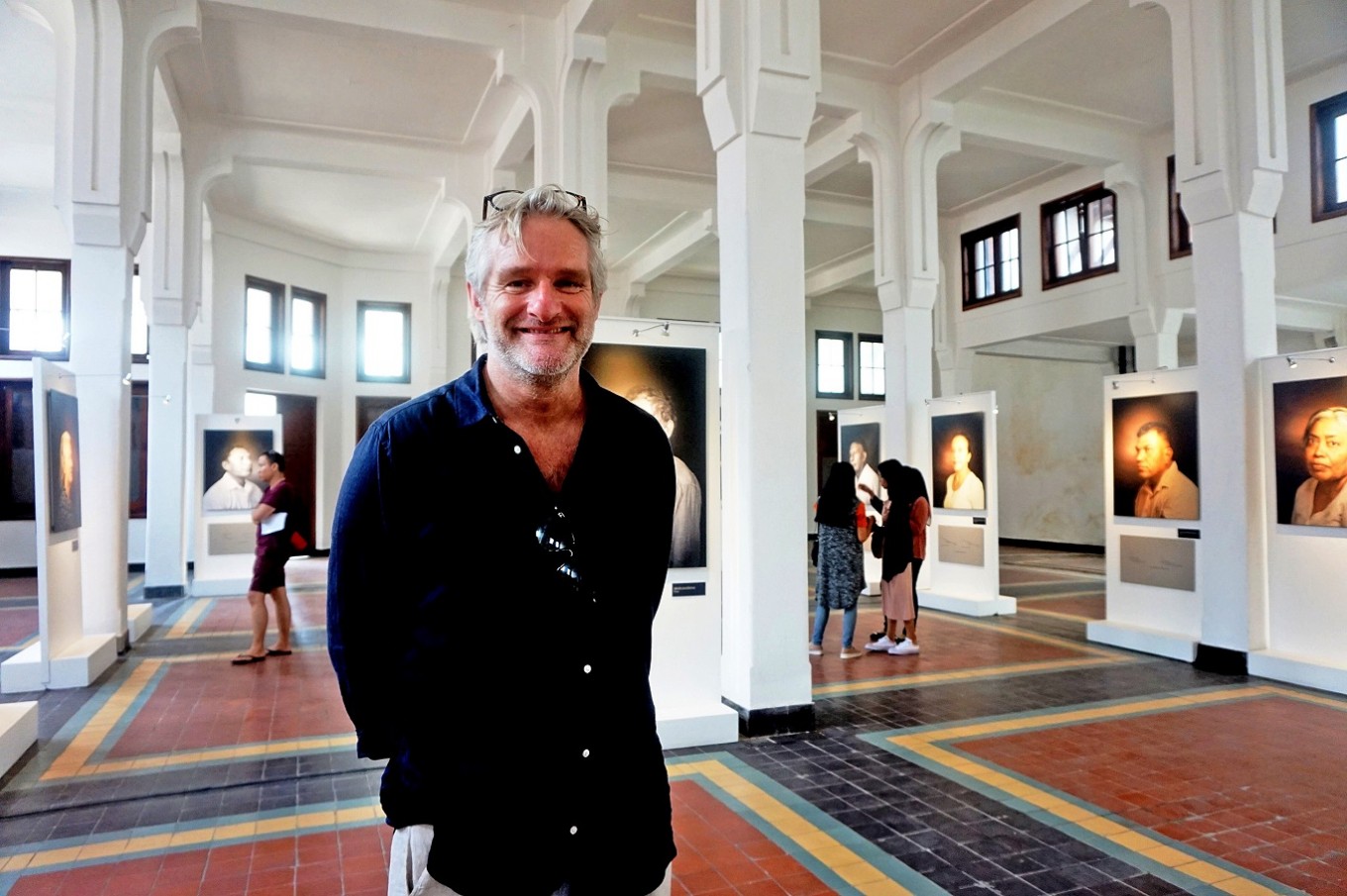'The Forsaken Children of the Compagnie'
The “Forsaken Children of the Compagnie” photo exhibition features portraits of descendants of a distant past who live in separate groups from the local population. Located in Eastern Indonesia, Australia and South Africa, their stories show similar element.
Change Size
 Tracing history: Dutch photographer Geert Snoeijer poses with his images, seen in the background, at "The Forsaken Children of the Compagnie" exhibition in the Old Town area, West Jakarta. The exhibition runs until May 14. (Carla Bianpoen/File)
Tracing history: Dutch photographer Geert Snoeijer poses with his images, seen in the background, at "The Forsaken Children of the Compagnie" exhibition in the Old Town area, West Jakarta. The exhibition runs until May 14. (Carla Bianpoen/File)
A
n ongoing exhibition, titled “Forsaken Children of the Compagnie,” has brought back the memory of the VOC, the Dutch East Indies Company, which was instrumental to Dutch colonial hegemony in the 17th and 18th centuries.
Typified by suppression, repression, violence, conflict and even genocide, the VOC was notorious for forcing indigenous peoples off their traditional lands.
Not forgotten are the bloody wars to attain the hegemony of the spice trade, which included the massacre and enslavement of the people of Banda Island, virtually the only place where the then lucrative nutmeg commodity was growing at the time.
Dutch photographer Geert Snoeijer’s remarkable images in the exhibition, however, are more related to the impact of the VOC on generations long after they had left the places where they chose to set foot and create offspring before leaving.
More specifically, the exhibition is about portraits of VOC descendants, a small group of families who all acknowledge European descent, the so-called “Mestiços of Kotalama” on Kisar, a tiny island of about 81 square kilometers on the maritime border of Timor-Leste. It is part of the remote Southwest Maluku regency in Maluku province, a place so remote, it took Snoeijer five days on a tiny boat to reach it.
Read also: Revisiting photographers' bible 'The Decisive Moment'
The Kisar population is divided into two main groups, each with its own language, said Leiden University linguist Aone van Engelenhoven, who has ancestry in Kisar.
The minority population lives in two villages in the southeastern part of the island and speaks Oirata, a language supposedly related to the languages of Papua New Guinea.
The majority population, comprising only eight families, refers to itself as Meher, derived from the Dutch word meester (master), and speaks a language that is related to Indonesian.
The pictures were part of a larger project in which Snoeijer was involved with historian, anthropologist and social researcher Nonya Peters, Leiden University linguist Aone van Engelenhoven and historian of Dutch and South African history Bart de Graaf.
The project encompassed research on the extent in which a sense of identity and “Dutchness” defined VOC descendants in Indonesia, Australia and South Africa.
Read also: Gloomy portraits of Indonesia's past and future
The exhibition is being presented simultaneously at the Westfries Museum in Hoorn, the Netherlands, while the National Museum in Bloemfontein, South Africa, focuses on VOC descendants in the Khoe tribes in South Africa and Namibia. Meanwhile, the Western Australian Museum in Perth, Australia, highlights the VOC descendants among the Nanda and Naongar Aboriginals in Western Australia.
Staring at the portraits of men and women in the building imbued with an atmosphere of the past, one cannot help but be drawn in by the fitting ambience.
Snoeijer revealed that he had utilized a studio set-up — a 52-kilogram mobile kit with independent battery and a sponsored Leica camera — for the making of the exhibition. “Which meant that I had to darken the space available, and set up lights and a brown or ochre-color backdrop, creating a little bit of the old masters sensation,” he said.
The portraits, all of which carry Dutch names and represent a mixture of European and indigenous peoples, gave off the feeling of being thrown back in time. They elicit a sense of drama and melancholy morphed into expressions of stern determination, though the stiff lips and the cracks in it and the tired eyes seem to tell another story. The photographs evoke a feeling of sympathy for the unspoken hardship and life struggles between identities.
More details can be found in the book Verlander, Forgotten Children of the VOC, which is offered at Rp 400,000 (US$30). The narrative of this research project reads like a fascinating novel illuminated with historical facts, adventurous travels, authentic interviews and real-time personal stories.
“FORSAKEN CHILDREN OF THE COMPAGNIE”
Feb. 26-May 14
Gedung Tjipta Niaga, Jl. Kali Besar III, Pinangsia Tamansari, West Jakarta









